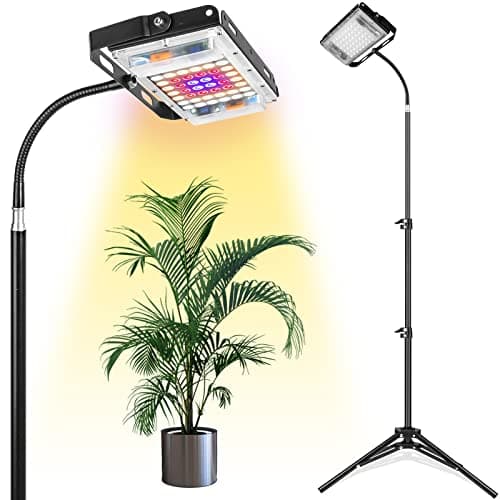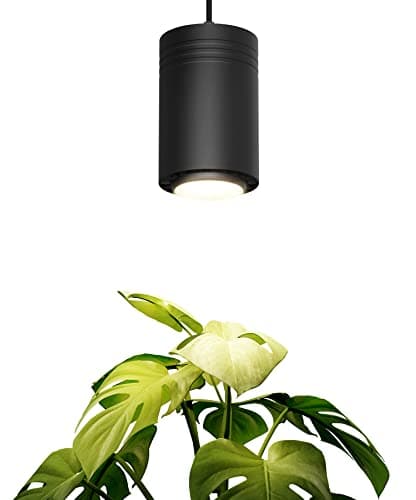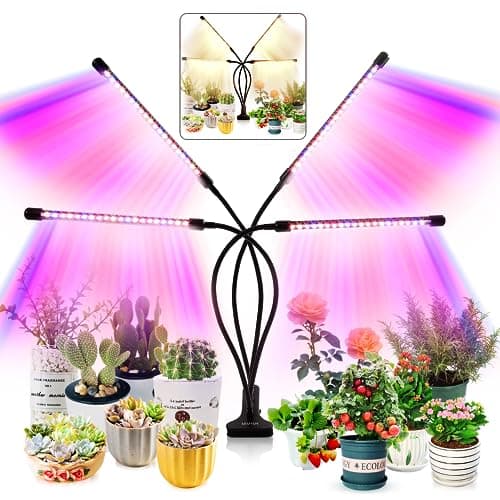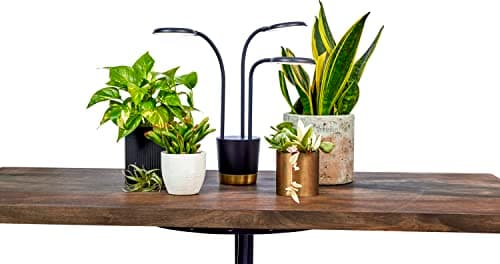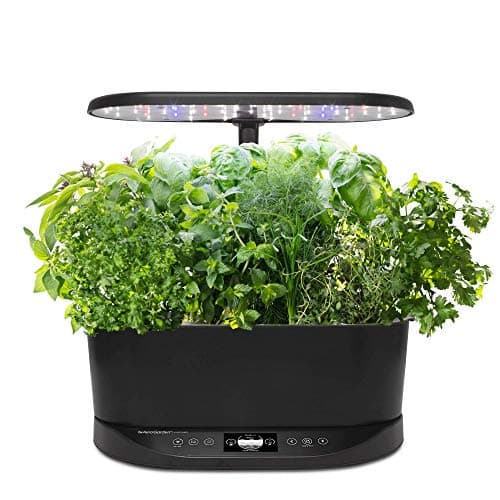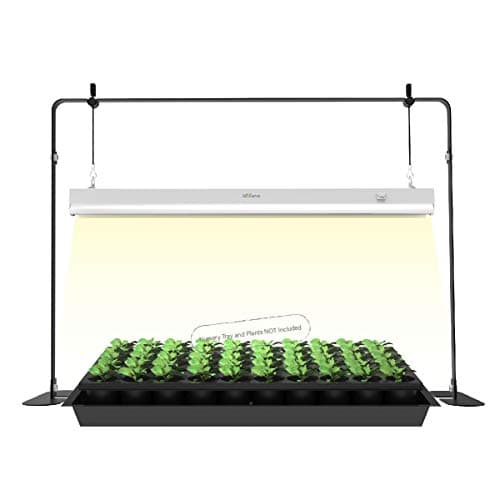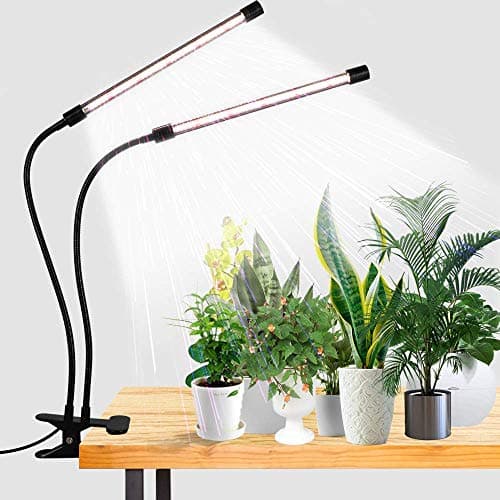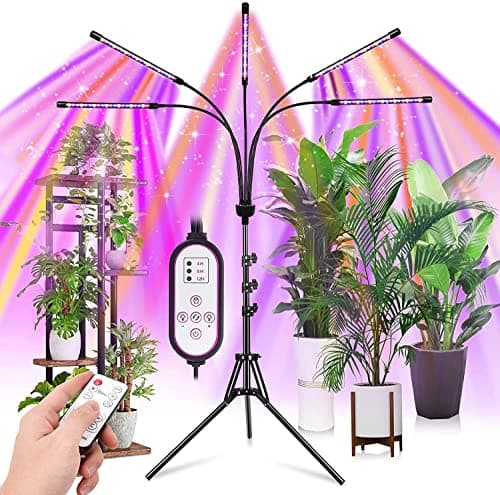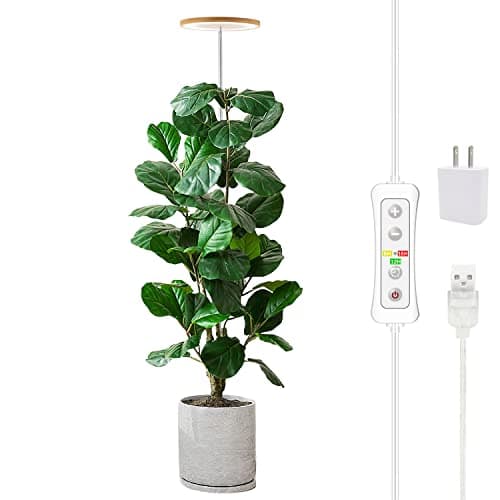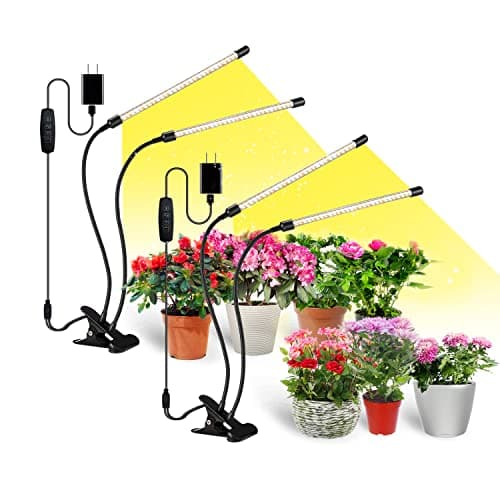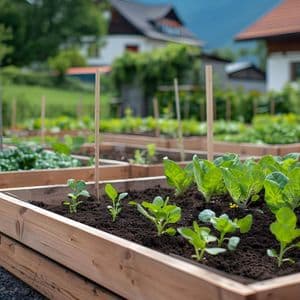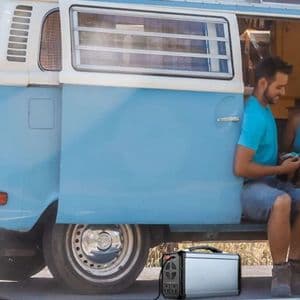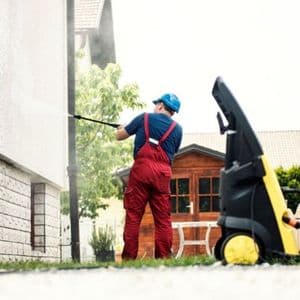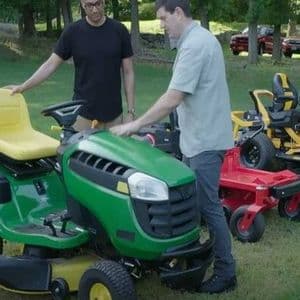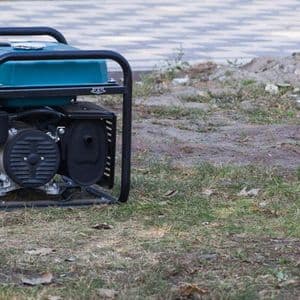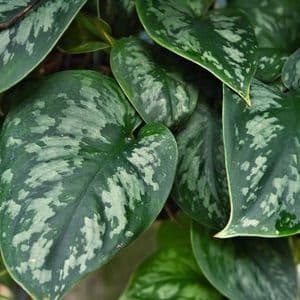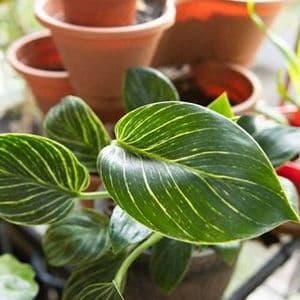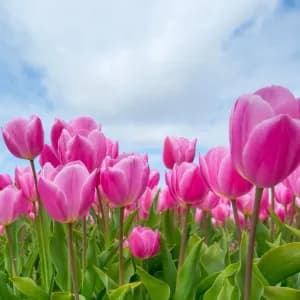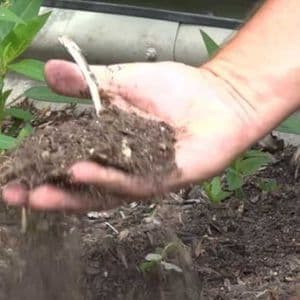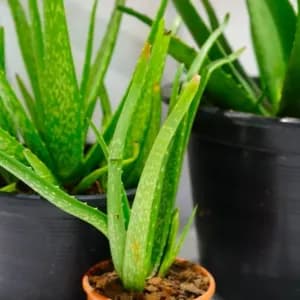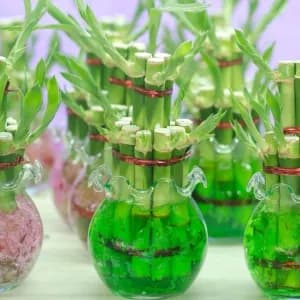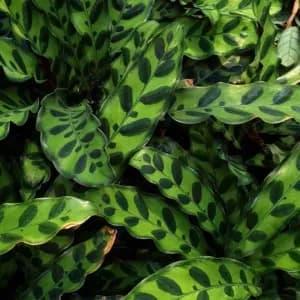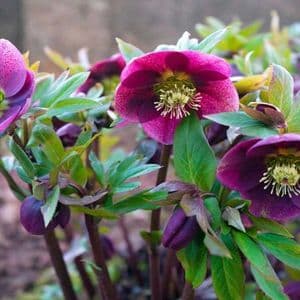Choosing the Perfect Grow Light for Your Indoor Garden
-
Size and Placement:
- Choose portable lights for small or seasonal setups.
- Opt for fixed fixtures for larger, dedicated spaces.
-
Type of Fixture:
- Panels, overhead hanging lights, and desktop lights are common options.
- Consider indoor garden systems with self-watering features and built-in lights.
-
Bulb Type:
- LED lights are energy-efficient, emit low heat, and have a long lifespan.
- Fluorescent lights are more efficient than incandescent but less so than LEDs.
- Incandescent bulbs are inexpensive but inefficient and produce high heat.
-
Wattage and Light Intensity:
- Typically, 32 watts per square foot is needed.
- Look for products that measure PPFD (Photosynthetic Photon Flux Density).
-
Light Placement:
- Place lights at appropriate heights to avoid burning or stretching plants.
- Use adjustable systems to maintain optimal distances as plants grow.
-
Light Schedules:
- Germination and seedlings: 16–18 hours of light daily.
- Mature plants: Gradually reduce light exposure to mimic natural conditions.
-
Timers and Automation:
- Built-in timers help maintain consistent light exposure.
- External or smart timers can be added for lights without built-in timers.
-
Plant-Specific Needs:
- Adjust light intensity and duration based on plant type and growth stage.
FAQs
1. What size grow light do I need?
The size of your grow light depends on the number of plants you want to cover and the space available. Portable lights are ideal for small or temporary setups, while fixed fixtures suit larger, dedicated spaces.
2. What are the different types of grow lights?
Grow lights come in various forms, such as panels, hanging lights, and desktop models. For an all-in-one solution, indoor garden systems with built-in lights, self-watering features, and planters are excellent choices.
3. Which bulb type is best for indoor gardening?
LED bulbs are the most energy-efficient and long-lasting option, producing minimal heat. Fluorescent lights are also efficient but less so than LEDs, while incandescent bulbs are cost-effective but inefficient and generate more heat.
4. How do I determine the proper placement of grow lights?
The placement of your lights should allow plants to receive adequate light without burning or stretching. LED and fluorescent lights can be placed 12–18 inches above plants, while incandescent lights require at least 24 inches. Adjustable fixtures are recommended for growing plants.
5. How much wattage do I need for my grow lights?
Generally, 32 watts per square foot is sufficient for most plants. However, it’s more accurate to check the PPFD (Photosynthetic Photon Flux Density) values, which measure the light a lamp emits.
6. How many hours of light do plants need?
The required light duration depends on the plant’s growth stage. Seedlings typically need 16–18 hours of light daily, while mature plants require less as they approach transplantation.
7. Can I automate light schedules for my plants?
Yes, many grow lights come with built-in timers. If your grow light lacks one, you can use an external or smart timer to automate light exposure and maintain consistent schedules.
8. Are all grow lights suitable for every plant type?
No, different plants have varying light intensity and duration needs. Seedlings require more intense light than mature plants, and some species need specific spectrums for optimal growth.
9. Why are LED grow lights so popular?
LED grow lights are energy-efficient, emit minimal heat, and last significantly longer than other types of bulbs, making them a cost-effective and reliable choice for indoor gardening.
10. Can I use regular household bulbs as grow lights?
Regular bulbs, like incandescent ones, are not ideal for plant growth because they lack the necessary light spectrum and produce excessive heat. Dedicated grow lights, especially LEDs, are far better for supporting plant health.

